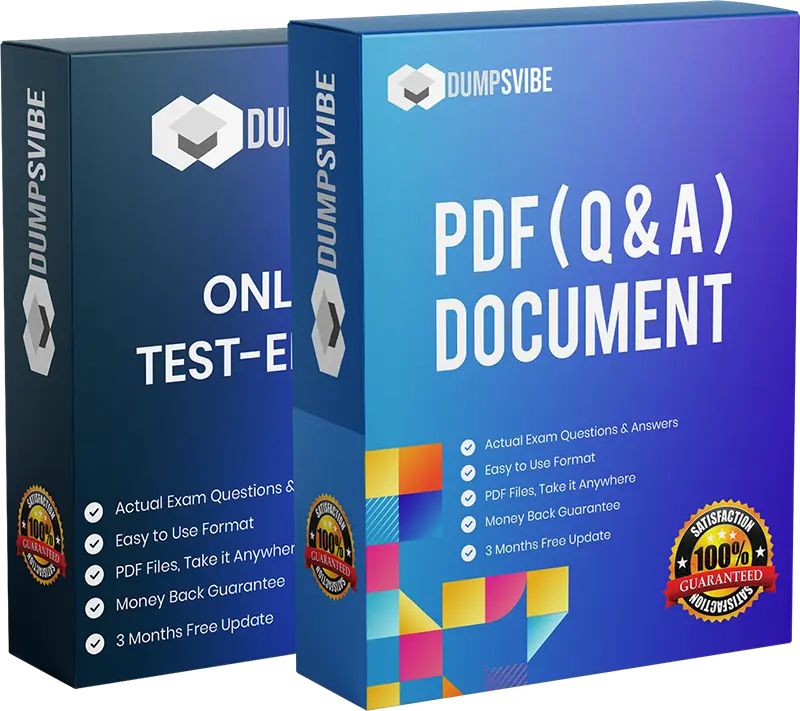
Citrix 1Y0-402 Exam Dumps
Citrix XenApp and XenDesktop 7.15 Assessment, Design and Advanced Configurations
Last Week 1Y0-402 Exam Results
Customers Passed Citrix 1Y0-402 Exam
Average Score In Real 1Y0-402 Exam
Questions came from our 1Y0-402 dumps.
Authentic Exam Dumps for 1Y0-402
Master Your Preparation for the Citrix 1Y0-402
Our team of highly skilled and experienced professionals is dedicated to providing updated and accurate study material in PDF format for our valued customers. Our material accumulators ensure that our students successfully achieve more than 90% marks in the Citrix 1Y0-402 exam. We understand the importance of keeping the material up-to-date, and any changes in the Citrix 1Y0-402 dumps file are communicated promptly to our students. We value your time and investment and make every effort to provide you with the best resources available. Rest assured, there is no room for error as we strive for excellence.
Friendly Support Available 24/7:
Our team is available round the clock to provide guidance and support. If you have questions or need assistance, feel free to reach out to us anytime. We are here to ensure you have access to the complete study material required to pass your Citrix 1Y0-402 with remarkable marks.
Recognized Dumps for Citrix 1Y0-402:
At Dumpsvibe, our experts are committed to delivering accurate and reliable material for your Citrix 1Y0-402 exam. To achieve sweeping success, it is essential to enroll in our comprehensive preparation program. We provide genuine material that will help you excel with distinction. Our provided material mirrors the exam questions and answers, enabling you to prepare effectively. Our dedicated team works tirelessly to ensure our customers can pass their exams on their first attempt without any trouble.
Citrix 1Y0-402 Questions:
We offer our students real exam questions with a 100% passing guarantee, allowing them to successfully pass their Citrix 1Y0-402 exam on their first try. Experienced experts have meticulously crafted our Citrix 1Y0-402 dumps PDF to match the model of the real exam question answers you will encounter during your certification journey.
Related Exams
Question # 1Scenario: A Citrix Architect needs to manage the disaster recovery process for a XenApp and XenDesktop environment. The environment currently consists of an active datacenter which is typically accessed by users and a disaster recovery (DR) datacenter which would be used in the event that a disaster impacts the primary datacenter. The organization has made it a priority to minimize the loss of data when failing over between datacenters and has begun planning for an event in which the environment must fail over from the primary datacenter to the DR datacenter. What is the appropriate sequence of steps that the architect should follow after getting management approval to complete the process in case of such an event?
A. Block access to primary datacenter, complete replication, terminate/drain existing sessions, reversedirection of replication, enable access in DR datacenter
B. Block access to primary datacenter, terminate/drain existing sessions, complete replication, reversedirection of replication, enable access in DR datacenter
C. Terminate/drain existing sessions, complete replication, block access to primary datacenter, enableaccess in DR datacenter, reverse direction of replication
D. Complete replication, terminate/drain existing sessions, block access to primary datacenter, reversedirection of replication, enable access in DR datacenter
E. Complete replication; block access to primary datacenter, terminate/drain existing sessions, enableaccess in DR datacenter, reverse direction of replication
F. Terminate/drain existing sessions; block access to primary datacenter, complete replication, reversedirection of replication, enable access in DR datacenter
Question # 2
Scenario: A Citrix Architect is designing hardware requirements for a small production XenApp andXenDesktop environment.Requirements:Access to the environment hosted in a single datacenterAbility to perform maintenance on the environment without requiring an outageWhich hardware requirement does the architect need to include for hypervisor hosts in order to meet thecustomer's needs?
A. Multiple individual hypervisor hosts in the same datacenter
B. Separate hypervisor cluster/pool in an alternate datacenter
C. Separate hypervisor clusters/pools in the same datacenter
D. N+1 hypervisor hosts in a single cluster/pool
Question # 3
Scenario: A Citrix Architect is conducting a security assessment. During the assessment, the architect gathersthe following Hardware Layer requirements from the customer:Reduce the attack surface of the XenServer resource pools.Prevent unauthorized access to NFS storage.Encrypt Administrative connections to the XenServer resource pools.Which three practices should the architect recommend so that the organization can meet its objectives?(Choose three.)
A. Configure target and host authentication to limit who can mount the file system.
B. Remove the current management VLAN connection to the Internet.
C. Install certificates from a trusted certificate authority on hypervisor hosts.
D. Use XenServer Direct Inspect APIs to implement Hypervisor Introspection.
E. Configure LUN zoning and LUN masking.
Question # 4
Scenario: A Citrix Architect needs to design a new XenApp and XenDesktop environment. Currently, theenvironment is configured with two locations with identical XenDesktop Sites. Each Site has two DeliveryControllers, two StoreFront servers, and one NetScaler high availability pair. The same applications have beenpublished from both Sites for all the users. Two Zones (Zone A and Zone B) are configured in each Site withone Controller in each zone. The Microsoft Exchange server is only accessible from Virtual Delivery Agent(VDA) machines in Zone A in each Site.The following access requirements have been identified:Users should have a single URL when accessing resources from different Sites.Users should always connect to the datacenter closest to their location.Applications added to Favorites within Citrix Receiver should be retained when accessed from differentSites.Launched applications and desktops should always connect through a local NetScaler.No duplication of applications published from different Sites.Microsoft Outlook should always launch in Zone A.In which mode should the architect recommend configuring Global Server Load Balancing (GSLB) to ensurethat a user always connects to the datacenter closest to their location?
A. Source IP hash
B. Dynamic RTT
C. Least response time
D. Static Proximity




